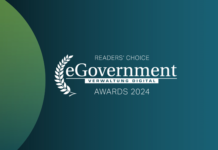There are about six million taxpayers of retirement and pension age. They also have to file an income tax return if their annual income exceeds the basic allowance. With the new einfachELSTER service of the tax administration in the KONSENS project, there is now a special online service: with the service, many pensioners and retirees can complete their electronic tax return in just a few steps.
Short & Concise
- Advantages of einfachELSTER: registration without certificate, simple dialogue interface and data retrieval tailored to the target group
- Existing models, databases and platforms served as the basis for implementing einfachELSTER as a continuous further development of the citizen-friendliness of ELSTER applications
- The challenge was to identify the necessary query modules in order to retrieve the relevant data for a large part of the people in the target group.
einfachELSTER focuses on simplicity. For the service, users only have to enter their tax ID and date of birth in a registration window and then receive an access number by post. When ordering the access number, users are already asked whether they meet the requirements: They receive domestic pensions and have no other income – with the exception of mini-jobs and investment income – from which final withholding tax has already been paid to the tax office or for which the saver’s allowance has been claimed. Only those who have additional rental income or higher investment income, for example, have to go the old-fashioned way via My ELSTER, where the complete income tax return form is offered.
30,000 einfachELSTER registrations in six weeks
Once logged in with the access number, users are presented with the next big advantage: the information on pension income or pensions as well as data on health and long-term care insurance are already available to the tax office and do not have to be entered. In the following, moderated steps, taxpayers enter, among other things, data on tax-reducing expenses such as church taxes, household-related services and extraordinary burdens. After checking the information in an overview, the tax return can be sent and the access number for the coming year can be ordered immediately.
The response has already been very positive. Around 30,000 access numbers have already been ordered, and more than 10,000 tax returns have been submitted via einfachELSTER.
Closer to the citizen by reducing the access hurdle
ELSTER is a success story. Launched more than 25 years ago, about 30 million taxpayers now use the electronic tax return. About 30 percent of them use My ELSTER for this purpose. The service is constantly being improved. This includes simplyELSTER.
Roland Krebs is head of department at the leading Bavarian State Office for Taxes and heads the nationwide KONSENS process ELSTER: “We have to become more and more citizen-friendly and work as up-to-date as possible on the internet. But that only works if you also work in a target group-oriented way. One challenge for many older citizens when using ELSTER: access by means of a certificate file and password. Therefore, there were clear goals for einfachELSTER. Roland Krebs: “These were the two reasons: To significantly lower the access hurdle and to formulate the approach so close to the citizen that one can complete the tax return in ten minutes.”
Technical development built on what was already in place
mgm has been supporting KONSENS and the Bavarian State Tax Office in the development and provision of the elster.de portal since the first portal version in 2005. Sergio Lerena Robles, member of the management team and long-time developer of ELSTER applications, was therefore able to draw on existing architectures and platforms for einfachELSTER. He says: “The choice of the appropriate technology and architecture for einfachELSTER, based on the Enterprise Low Code Platform A12, was pretty clear from the start, including which interfaces to use. The tax return captured via the einfachELSTER application is transmitted to the ELSTER input servers as an ELSTER record and is no different from any other tax return record.”
A bigger challenge, he says, was choosing the right interface. The project team had started with a chat; filling out the form was planned as a conversation of questions and answers. “But the prototype showed early on that such a format was not suitable for the target group,” says Lerena Robles. Background: A representative group of test persons from the target group had subjected the prototype – and also later the current versions – to a usability test in exemplary runs.
The older users were quite familiar with chats, but “they were surprised that you can do a tax return in a chat. There was a real block in some cases,” says Sergio Lerena Robles. So a more target-group-oriented solution was sought. The result: a wizard, i.e. a sequence of pages linked to certain conditions. The application automatically skips questions and input fields that are not necessary.
An example of digital sovereignty in action
The architecture of the application was largely clear from the beginning, the challenge was rather to define the functional building blocks. The technical side contributed to this: The experts from the tax administration tried to reach as many users as possible with as few fields as necessary. The result is around 40 fields, with which a large proportion of pensioners and retirees can be addressed.
Another requirement was that users should be able to complete the explanation in no more than ten minutes. Sergio Lerena Robles: “Such specifications are good, because this way we could also measure it well in the user experience test.” For him, einfachELSTER is a living example of digital sovereignty with multichannel, i.e. with two different interfaces for the same query, whose topicality is ensured by the tax authorities’ specialist site. Technical information is modelled by experts and persisted in a central, digital archive (repository). This information is maintained centrally and is then available for both My ELSTER and simplyELSTER. As a result, both applications benefit from technical changes at the same time, including ensuring that rule conditions and field formats do not diverge. Lerena Robles: “Digital sovereignty is still given, the tax administration has the whole thing in its own hands.”
Applications for other target groups possible, but not a priority
Who can use simplyELSTER is not based on age. The framework is provided by tax characteristics. “In fact, students and many employees could also complete their tax returns via einfachELSTER because income has already been electronically transferred to the tax authorities,” says Roland Krebs. However, this in turn requires the definition of additional fields, such as income-related expenses like travel to work. For each additional special target group, the experts have to analyse typical data fields. If a large part of the taxpayers in a group can be reached, a service similar to simplyELSTER is definitely worth considering.
In principle, however, the focus is not on identifying further target groups and individual special dialogues, but on an overarching goal, says Roland Krebs: “The idea is rather to combine the simple input option with the form input of My ELSTER, so that you can do both. A pensioner makes certain entries, such as pension income, in interview or wizard mode, but if he does have other income, he switches to form mode and makes entries, for example, on rental income in Annex V in classic form mode.”
In this way, einfachELSTER works on two levels: as a practical new service for a target group and the basis for further improving the user-friendliness of ELSTER as a whole.
Further information (in German):
- YouTube: Explainer video of ELSTER
- TV report: Tax tips for pensioners
- Süddeutsche Zeitung (German newspaper): Software helps retirees with their tax returns







